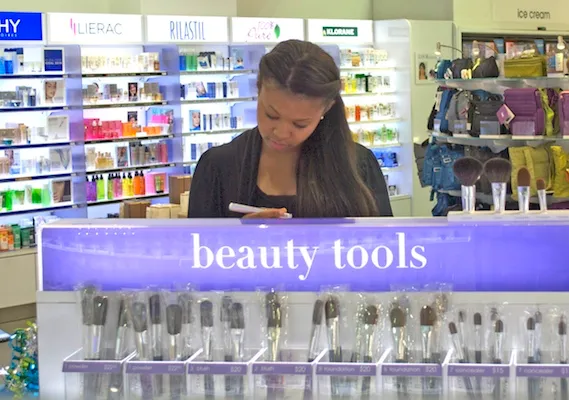NEW YORK — Food, drug and mass chains are a favored retail destination of shoppers who prefer an in-store versus an online experience, according to a consumer poll by Imprint Plus.
The customized name badge and signage maker said Monday that it conducted a random survey of 1,000 men and women nationwide and found that 29.7% prefer to shop in-store, 32.5% prefer to shop online and 37.8% like to shop both in-store and online.
Of consumers favoring the in-store retail experience, they shop the following stores in order of preference: discount mass merchants such as Walmart and Target (76%), food retailers such as supermarket chains and Whole Foods (71.2%), and drug stores such as CVS Pharmacy and Walgreens (50%).

Other retailers cited by in-store shoppers included beauty supply chains such as Sephora (48.9%), consumer electronics stores like Best Buy (48.9%), hardware stores like Lowe’s and Home Depot (44.1%) and department stores such as Macy’s or Nordstrom (37.6%).
“Our survey tells us that consumers shop at brick-and-mortar retailers primarily for discounted merchandise, food, drug, and health and beauty aids, as well as for consumer electronics, appliances, building supplies and clothing,” according Kristin MacMillan, president of Imprint Plus.
Consumers who like to shop in-store reported the need to see, touch and handle merchandise as part of the buying experience, as well as on-the-spot sales and not having to wait for their purchases to be delivered.
With food purchases, 86.1% of respondents prefer to shop in-store so they can judge quality and freshness. Consumers also favor the brick-and-mortar experience when shopping for apparel, whith 60% preferring in-store and 17% opting to buy clothing online.
What shoppers dislike most about in-store experience is that it’s time consuming, often with long-wait times to check out or return merchandise, the Imprint Plus survey revealed. Other negatives of the brick-and-mortar shopping experience cited by respondents included difficulty in finding sizes, styles and colors and travel time to and from stores.
“The retail in-store experience fulfills the need for using the senses as part of the shopping experience, and feeling, touching and even smelling is utilized in merchandise selection,” MacMillan noted.
Unsurprisingly, 52% of consumers who prefer online shopping cited convenience as the chief reason (52%). Other benefits of the online experience, the survey found, included a wide selection of merchandise, free shipping and returns, price comparisons and online customer reviews.
What these consumers dislike about online shopping experience is not being able to see the products in person, the inability to try on for size and fit, and the need to wait for shipping. Shopping online for food presents its own challenges, including the need to be home to accept delivery and the inability to see and handle the items offered.
“Consumers are pressed for time and would be more willing to shop in brick-and-mortar stores if they could shop more efficiently in less time,” MacMillan explained. “A focus on customer service would help the consumer navigate through long wait times and merchandise selection. The use of technology and retailer apps can play a role in streamlining the process of merchandise selection and checkout.”
More than half of shoppers surveyed said establishing a personal relationship with a sales associate — whether in-store or online — was important. Almost half of respondents said that having a personal relationship with a store sales associates would lead to more shopping in that store.
“Today’s consumers want personalized experiences when shopping, and retailers need to blend technology and service to meet their needs,” added MacMillan. “A simple add-on may be the ability to select clothes online and reserve a dressing room, saving time and creating a new shopping experience.”









